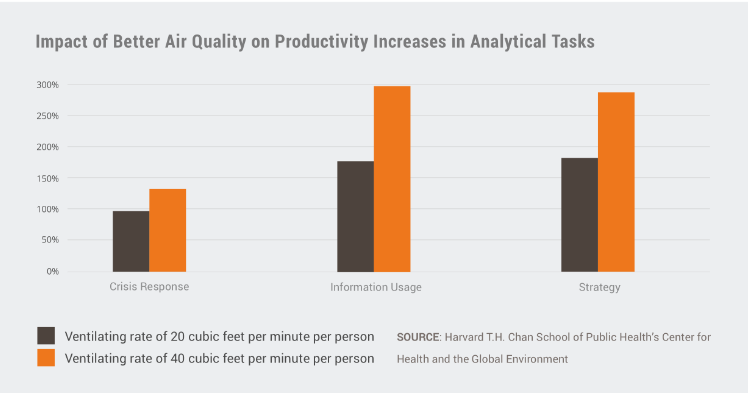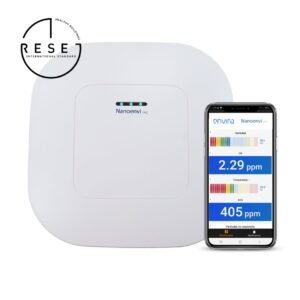In a world where the importance of air quality is increasing every day, the RESET Air Standard has become an essential tool for ensuring indoor air quality and promoting healthy indoor environments.
What is the RESET Air Standard?
RESET, which stands for “Regenerative, Ecological, Social & Economical Targets”, is an indoor air quality certification system that goes beyond conventional approaches.
RESET Air is both a standard and a certification for real-time monitoring and assessment of indoor air quality.
Unlike other certifications such as LEED or BREEAM, which focus on the sustainability of the building as a whole, RESET focuses on the quality of the air breathed by the people who occupy the space. This approach is based on the idea that indoor air quality is critical to the health and well-being of occupants.
Why is it important?
The RESET standard is designed to promote continuous monitoring of indoor air quality and to standardise the way in which monitoring results are measured and reported for comparability and benchmarking.
In addition, RESET certification is important for a number of reasons:
Health and well-being: Indoor air quality has a significant impact on people’s health and well-being. Exposure to indoor air pollutants can cause a range of health problems, including allergies, asthma, eye and skin irritation, and respiratory problems. RESET ensures that buildings provide a healthy indoor environment.
Performance: Indoor air quality also affects performance and productivity. An indoor environment with good air quality can improve concentration and decision-making.

Regulatory compliance: In many places, there are strict regulations on indoor air quality in commercial and public buildings. RESET helps building owners and managers to comply with these regulations.
Which projects can be certified?
The RESET standard can be applied to both new and existing projects.
There are two types of projects:
Commercial Interiors (CI): focuses on a part or section of the building and is aimed at tenants or partial owners of an interior space, such as offices, commercial premises, etc.
Core & Shell (CS): focuses on the whole building and is aimed at owners and developers.
How does the RESET Standard work?
This certification addresses data quality at source and specifies requirements for the air quality monitors and sensors used.
It also ensures that the data is reliable and relevant, requiring that air quality monitors are correctly installed and have long-term maintenance plans.
Finally, RESET sets out requirements for how data is communicated and connected to ensure transparency and access through analysis and reporting.
The sensors used must monitor key pollutant parameters such as:
- Carbon dioxide (CO2) concentration.
- PM2.5 and PM10 particles
- Volatile Organic Compounds (VOCs)
- Temperature
- Relative humidity
The data is collected and transmitted to a data visualisation platform where it can be verified in real time, ensuring complete transparency.
Nanoenvi IAQ, RESET-certified air quality monitor
Accurate air quality monitors are essential to determine the impact of air quality on occupant health and to properly manage the operation and maintenance of heating, ventilation and air conditioning systems.
RESET accredited monitors have passed a specific test procedure and are required for any project seeking accreditation.
The Nanoenvi IAQ air quality sensor has successfully passed all the tests and specific requirements and has become a RESET accredited monitor, an indispensable tool for those who want to opt for the certification of their indoor spaces.











